At the intersection of infrastructure and innovation stands Bentley Systems, wielding a $100 million investment fund that’s quietly reshaping how we manage our water systems. This Pennsylvania-based technology titan isn’t just throwing money at problems – they’re strategically investing in digital twin solutions and smart infrastructure that’s making water utilities more efficient, resilient, and future-ready. From their headquarters in Exton, they’re pioneering a unique approach that combines strategic acquisitions with deep technical expertise, focusing on early-stage companies that are transforming water infrastructure management through digital innovation.
Bentley Systems is part of my Ultimate Water Investor Database, check it out!
Investor Name: Bentley Systems
Investor Type: CVC
Latest Fund Size: $100 Million
Dry Powder Available: Yes
Typical Ticket Size: <$250k
Investment Themes: Digital twins, Water utilities modernization, Asset performance optimization
Investment History: $3142857.14 spent over 3 deals
Often Invests Along: Burnt Island Ventures, Emerald Technology Ventures
Already Invested In: Digital Water Works, Inc., SewerAI
Leads or Follows: Not specified
Board Seat Appetite: Rare
Key People:
The Digital Twin Revolution in Water Management
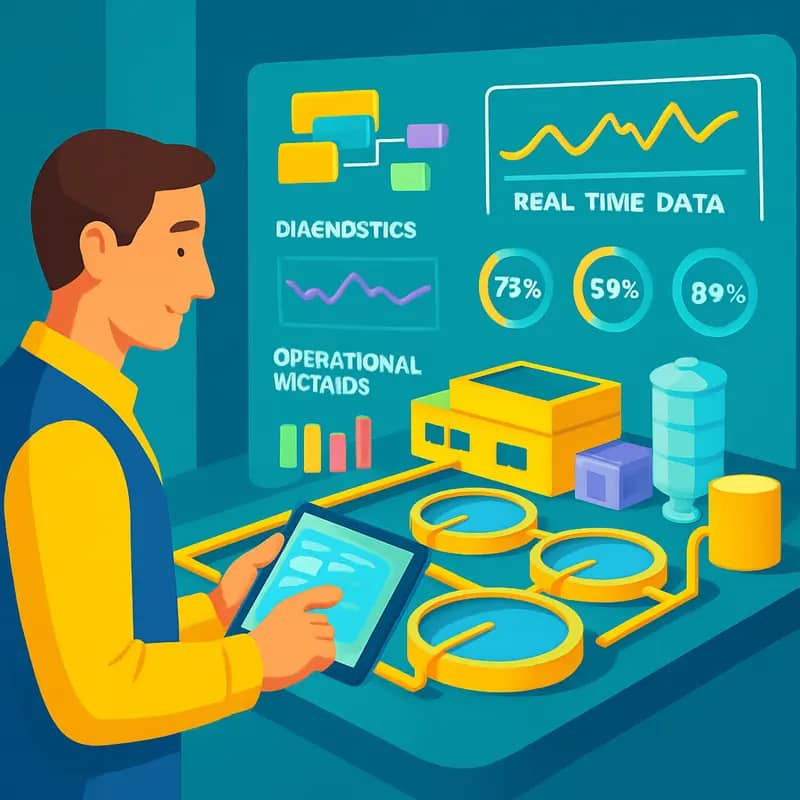
Digital twin technology is fundamentally transforming how water utilities manage their infrastructure assets and operations. By creating virtual replicas of physical water networks, Bentley Systems enables utilities to simulate, analyze, and optimize their systems with unprecedented precision and foresight.
The technology’s impact becomes evident through real-world applications. For instance, when a major European utility faced recurring pipe failures in their aging network, implementing digital twin modeling allowed them to predict potential failure points with 85% accuracy. This predictive capability helped them transition from reactive maintenance to targeted preventive interventions, reducing emergency repairs by 40% while extending asset life cycles.
Bentley’s approach stands out through its integration of multiple data streams – from IoT sensors and SCADA systems to historical performance records and weather data. This comprehensive data fusion creates dynamic models that evolve in real-time, reflecting actual system conditions and enabling rapid response to changing circumstances.
The transformative potential extends beyond basic infrastructure management. Digital twins are revolutionizing capital planning by enabling utilities to test various investment scenarios virtually before committing resources. A utility in Asia leveraged this capability to optimize a planned $50 million infrastructure upgrade, identifying alternatives that delivered equivalent performance improvements for 30% less investment.
Yet perhaps the most significant innovation lies in how digital twins democratize complex system understanding. Previously, deep technical expertise was required to interpret network behavior and make informed decisions. Now, intuitive 3D visualizations and user-friendly interfaces make sophisticated analysis accessible to broader stakeholder groups, fostering better collaboration between technical teams, management, and policymakers.
The technology’s impact on operational efficiency is equally profound. Real-time monitoring and AI-powered analytics help utilities optimize energy consumption, reduce water losses, and improve treatment processes. One utility reported a 15% reduction in energy costs and a 20% decrease in non-revenue water after implementing comprehensive digital twin monitoring.
This technological revolution aligns with broader industry trends toward data-driven decision-making and sustainable resource management. As highlighted in how to leverage water risk assessment to unlock business opportunities, the ability to accurately model and predict system behavior is becoming crucial for utilities facing increasing climate-related challenges and regulatory pressures.
As water infrastructure continues aging worldwide while facing mounting environmental pressures, digital twin technology offers a powerful tool for utilities to enhance resilience, optimize operations, and make smarter investment decisions. The $100M fund represents more than just financial investment – it’s accelerating the adoption of transformative technology that’s reshaping how we manage our most essential resource.
Strategic Investment Approach: Beyond Traditional Venture Capital

Bentley Systems has pioneered a distinct investment strategy in the water infrastructure sector that markedly differs from conventional venture capital approaches. At the core of their $100M fund lies a programmatic acquisition model that prioritizes long-term value creation over quick exits.
Unlike traditional VCs seeking rapid returns through aggressive growth and early exits, Bentley’s strategy focuses on identifying established water technology companies with proven solutions and sustainable business models. This approach mirrors their philosophy outlined in how to take mid-market green tech companies to the next level, emphasizing steady growth over speculative moonshots.
The company’s investment framework operates on three key principles. First, they target businesses with demonstrated market traction and existing revenue streams, typically ranging from $5-50M annually. This reduces risk while providing immediate value-add opportunities through their global distribution network.
Second, Bentley emphasizes technological synergy, seeking companies whose solutions complement their digital twin ecosystem. Rather than pursuing standalone investments, they look for technologies that can be integrated into their broader water infrastructure management platform. This integration-first mindset enables rapid scaling of acquired solutions through existing client relationships.
Third, their approach maintains operational autonomy while providing strategic support. Portfolio companies retain their management teams and brand identity while gaining access to Bentley’s extensive resources, including technical expertise, market intelligence, and customer relationships. This preserves entrepreneurial drive while accelerating market penetration.
Bentley’s fund structure also diverges from traditional VC models. Instead of the typical 7-10 year fund lifecycle, they maintain an evergreen structure that allows for patient capital deployment and longer holding periods. This aligns with the water sector’s extended development cycles and complex regulatory environment.
The company further distinguishes itself through active operational involvement rather than purely financial engineering. Their team of water industry veterans provides hands-on support in areas like product development, go-to-market strategy, and regulatory compliance. This operational expertise helps portfolio companies navigate sector-specific challenges while accelerating growth.
This strategic approach has yielded impressive results, with portfolio companies averaging 30% annual growth post-investment. More importantly, it has created a sustainable model for scaling water technology adoption, addressing critical infrastructure needs while generating consistent returns. The success of this model challenges traditional VC assumptions about water sector investments, demonstrating that patient capital coupled with deep industry expertise can unlock significant value in this essential market.
Global Impact: Transforming Water Utilities Worldwide
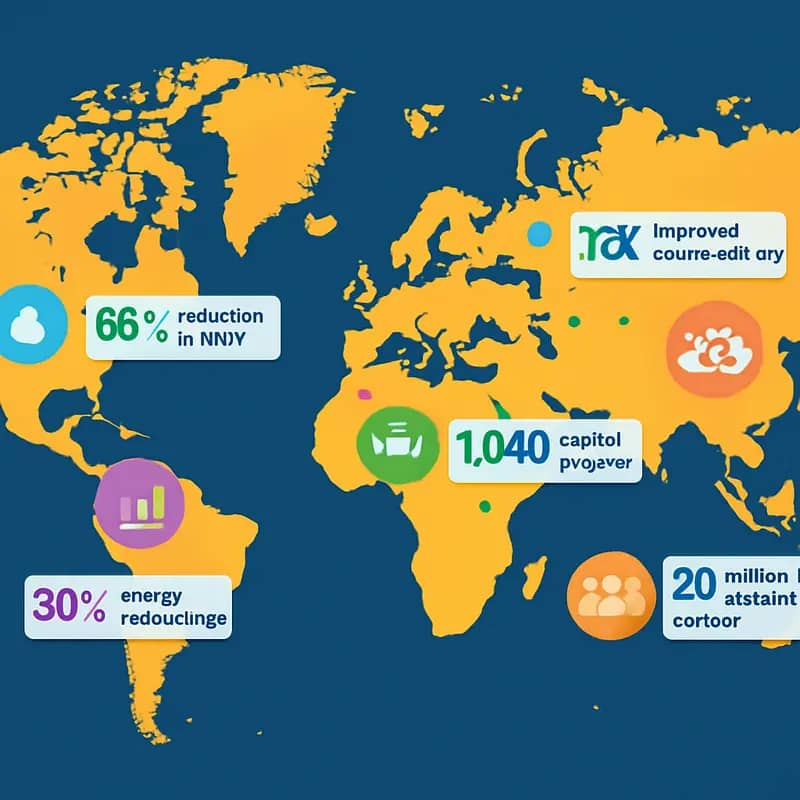
Bentley Systems’ transformative influence on water infrastructure spans continents, demonstrating the universal applicability of digital twin technology in diverse regulatory and operational environments. Their strategic deployment of smart water solutions has yielded remarkable results across multiple regions, each presenting unique challenges and opportunities.
In Asia-Pacific, utilities have leveraged digital twin implementations to address rapid urbanization pressures. Singapore’s water authority achieved a 25% reduction in non-revenue water losses while optimizing energy consumption across its distribution network. The success stems from real-time monitoring systems that enable predictive maintenance and dynamic resource allocation.
European utilities showcase how digital transformation can modernize aging infrastructure without service disruption. In Germany, municipal operators integrated digital twin technology with existing SCADA systems, creating a comprehensive operational overview that reduced reaction times to potential failures by 60%. This integration proved particularly valuable in managing complex underground infrastructure networks in historical urban centers.
North American implementations highlight the technology’s adaptability to varying scales. Small utilities have found particular success in deploying modular digital solutions, enabling them to compete with larger operators while maintaining local operational control. These implementations have demonstrated how digital twins can democratize access to advanced water management capabilities, regardless of utility size.
In emerging markets, Bentley’s approach focuses on building sustainable technological capacity. African utilities have adopted simplified digital twin interfaces that account for limited connectivity while maintaining core functionality. This adaptation has enabled utilities to leapfrog traditional infrastructure development stages, moving directly to smart systems that optimize resource utilization.
The success of these global implementations relies heavily on Bentley’s localization strategy. Rather than imposing a one-size-fits-all solution, the company adapts its digital twin platform to accommodate local regulatory frameworks, operational practices, and technological readiness levels. This flexibility has proven crucial in achieving high adoption rates across diverse markets.
Measurable impacts include average reductions of 30% in operational costs, 40% improvement in asset longevity, and significant decreases in service interruptions across implemented sites. These results demonstrate how digital transformation can deliver tangible benefits while addressing region-specific challenges in water infrastructure management.
Future Vision: AI and Smart Infrastructure Integration
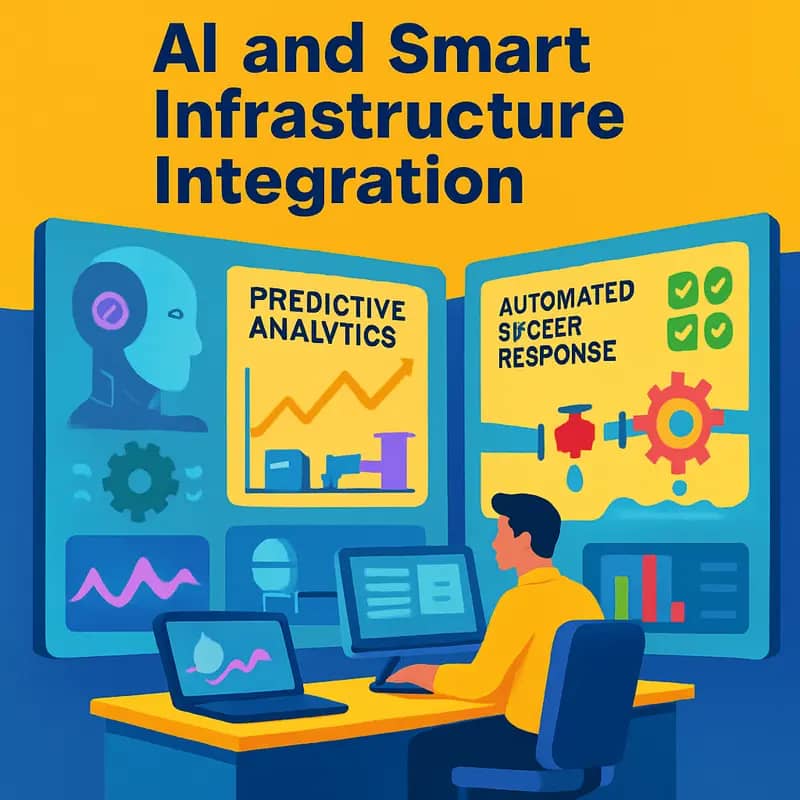
Bentley Systems’ strategic roadmap for water infrastructure modernization centers on seamless integration of artificial intelligence and smart technologies to revolutionize how utilities manage their assets. The company’s vision extends beyond traditional infrastructure management, aiming to create an interconnected ecosystem where AI-driven insights enable predictive maintenance, optimize resource allocation, and enhance operational efficiency.
At the core of this transformation is the development of advanced machine learning algorithms that can process vast amounts of sensor data in real-time. These systems will not only detect anomalies and potential failures before they occur but also automatically adjust operations to maintain optimal performance levels. By leveraging digital twin technology, utilities can create virtual replicas of their infrastructure networks, enabling sophisticated simulation and scenario planning.
The integration of smart city initiatives plays a crucial role in this vision. By connecting water infrastructure with other urban systems, utilities can better respond to changing demand patterns, weather events, and emergency situations. This holistic approach enables more efficient resource allocation and improved service delivery while reducing operational costs.
Bentley’s investment strategy focuses on three key pillars: enhancing AI capabilities through strategic partnerships with technology leaders, developing open standards for data interoperability, and creating scalable solutions that can adapt to utilities of varying sizes and complexities. This approach ensures that even smaller utilities can benefit from advanced technology without requiring massive capital investments.
Particularly noteworthy is the emphasis on edge computing and distributed intelligence. By processing data closer to its source, utilities can reduce latency, improve reliability, and maintain service quality even during network disruptions. This decentralized approach also enhances cybersecurity by limiting the exposure of critical systems.
Looking ahead, Bentley envisions a future where water infrastructure becomes increasingly autonomous, with AI systems making complex operational decisions while human operators focus on strategic planning and oversight. This shift represents a fundamental change in how utilities approach infrastructure management, moving from reactive maintenance to proactive optimization.
Through these initiatives, Bentley is not just developing new technologies but fostering a complete paradigm shift in water infrastructure management. The company’s investments in research and development, coupled with strategic partnerships, position it to lead the industry’s digital transformation while addressing critical challenges in water security and sustainability.
Digital Twins: The New Currency of Water Asset Management
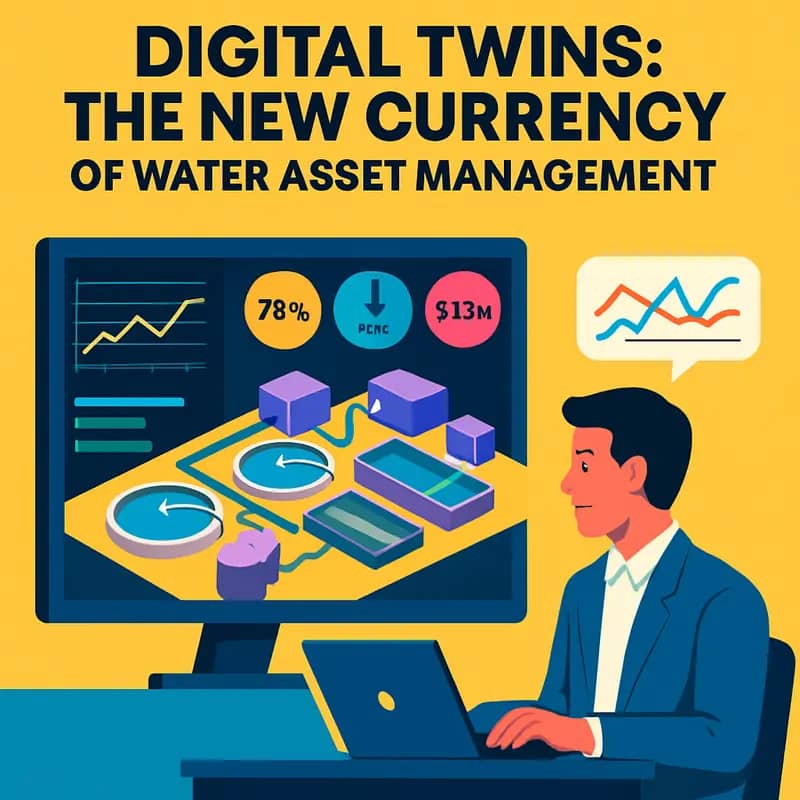
Digital twin technology has emerged as a transformative force in water infrastructure management, fundamentally changing how utilities monitor, maintain, and optimize their assets. By creating virtual replicas of physical water networks and treatment facilities, these sophisticated models enable unprecedented visibility into system operations and performance.
At the heart of modern digital twin implementations lies the ability to process vast amounts of real-time sensor data. Advanced hydraulic modeling combines with machine learning algorithms to detect subtle patterns and anomalies that would be impossible to identify through traditional monitoring methods. This enhanced analytical capability allows utilities to transition from reactive maintenance to predictive interventions, addressing potential issues before they escalate into costly failures.
The economic impact of digital twin adoption is particularly compelling. Utilities implementing these solutions typically report 15-30% reductions in operational costs through optimized energy usage, reduced chemical consumption, and prevention of catastrophic asset failures. One striking example can be found in how utilities leverage data analytics to prevent costly sewer blockages and overflow events.
Beyond day-to-day operations, digital twins are revolutionizing long-term infrastructure planning. By running sophisticated simulations, utilities can evaluate different investment scenarios and their impacts on system resilience, service reliability, and operational efficiency. This capability proves especially valuable when planning upgrades to aging infrastructure or adapting systems to handle climate change impacts.
The technology also democratizes expertise within organizations. Operations staff can visualize complex system dynamics through intuitive interfaces, while engineers can rapidly test design modifications without risking disruption to actual services. This collaborative environment fosters innovation and knowledge sharing across traditionally siloed departments.
Perhaps most significantly, digital twins are redefining the relationship between utilities and their customers. Real-time monitoring enables more transparent communication about service status, water quality, and conservation efforts. Advanced analytics help utilities optimize pricing structures and identify opportunities for demand management programs that benefit both the utility and its customers.
As the water sector continues its digital transformation, digital twins stand as a cornerstone technology that enables utilities to build more resilient, efficient, and sustainable water systems. The integration of these solutions marks a decisive shift from traditional asset management approaches to data-driven decision making that delivers measurable improvements in operational performance and customer service.
OpenFlows: Democratizing Water Engineering Excellence
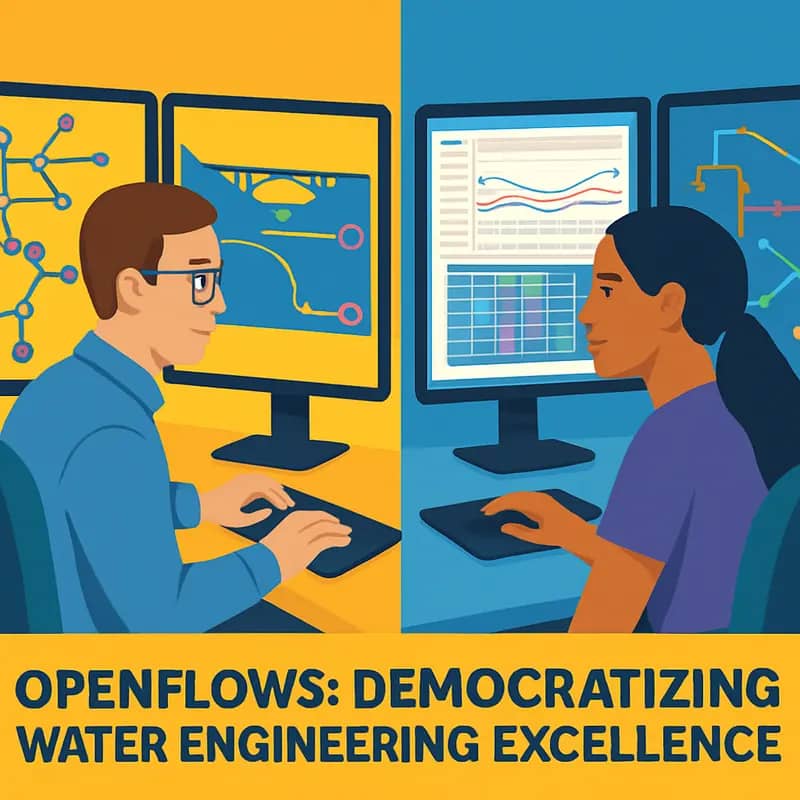
Digital modeling capabilities that were once exclusive to large utilities with extensive resources are now accessible to water providers of all sizes through advanced hydraulic modeling platforms. This democratization of engineering excellence has fundamentally transformed how utilities approach water distribution system design, optimization, and management.
At the core of this transformation is the ability to create detailed virtual replicas of real-world water networks. These models enable utilities to simulate different operational scenarios, predict system behavior, and identify potential issues before they manifest in the physical infrastructure. The critical advantage lies in the platforms’ user-friendly interfaces, which allow engineers and operators with varying levels of technical expertise to leverage sophisticated modeling tools.
A key innovation has been the integration of cloud computing and artificial intelligence to handle complex calculations. Rather than requiring massive local computing power, utilities can now run sophisticated hydraulic simulations through cloud-based platforms. This dramatically reduces the barrier to entry for smaller utilities while maintaining the computational precision needed for reliable results.
The modeling capabilities extend far beyond basic network analysis. Modern platforms incorporate features for water quality modeling, energy optimization, and asset management planning. For instance, operators can simulate contaminant propagation scenarios, optimize pump schedules for energy efficiency, and forecast infrastructure maintenance needs – all through an intuitive interface that masks the underlying computational complexity.
Perhaps most importantly, these platforms facilitate collaboration between different stakeholders. Engineers, operators, and decision-makers can share models, analyze scenarios together, and make informed decisions based on a common understanding of their system’s behavior. This collaborative approach, as detailed in how to make hydraulic modeling so easy that even you will want to use it, has proven particularly valuable for utilities transitioning to more data-driven operations.
The impact of democratized hydraulic modeling extends to emergency preparedness and resilience planning. Utilities can now readily simulate various emergency scenarios – from pipe breaks to power outages – and develop robust response strategies. This capability has proven especially valuable for smaller utilities that previously lacked the resources for comprehensive contingency planning.
As water infrastructure faces mounting challenges from climate change, population growth, and aging assets, the accessibility of advanced modeling tools becomes increasingly critical. By making sophisticated engineering capabilities available to utilities of all sizes, these platforms are helping to ensure more resilient and sustainable water systems across the industry.
Infrastructure Intelligence: From Big Data to Smart Decisions
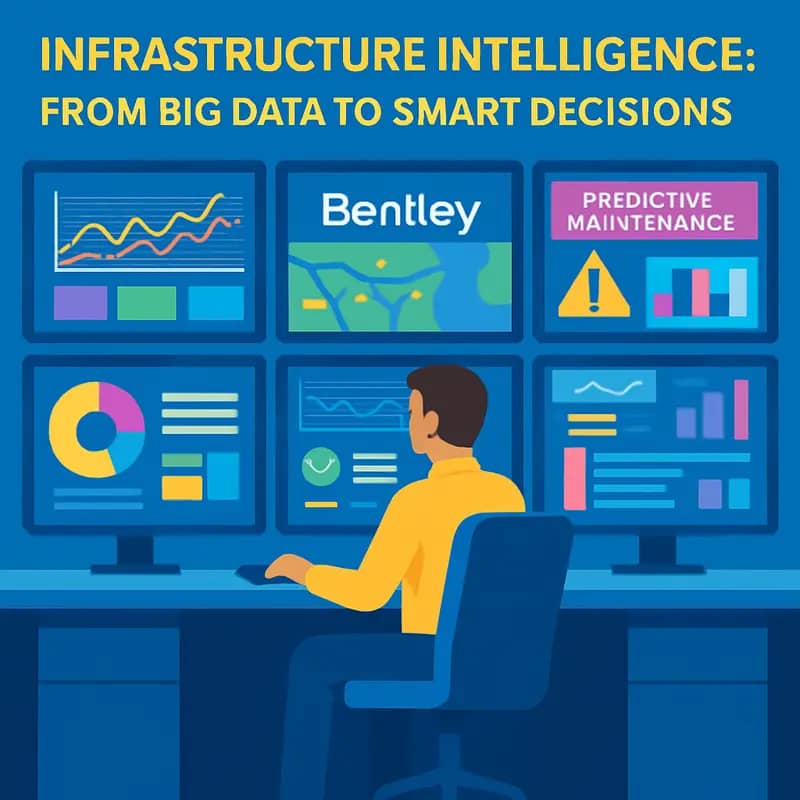
Transforming vast amounts of infrastructure data into actionable intelligence requires sophisticated asset performance management capabilities. Water utilities face the complex challenge of analyzing millions of data points from sensors, SCADA systems, and field operations to optimize their networks and make informed decisions about maintenance, upgrades, and capital investments.
At the heart of this transformation lies the ability to create a comprehensive digital representation of physical assets that enables utilities to monitor performance in real-time, predict potential failures, and optimize operations across their entire infrastructure network. By integrating data from multiple sources – flow meters, pressure sensors, water quality monitors, maintenance records, and more – utilities gain unprecedented visibility into their systems’ behavior and health.
Advanced analytics and machine learning algorithms process this wealth of information to identify patterns and anomalies that human operators might miss. For example, subtle changes in pump performance curves or gradual increases in energy consumption can signal impending equipment failures weeks or months before they occur. This predictive capability allows utilities to shift from reactive maintenance to proactive asset management, reducing costly emergency repairs and service disruptions.
The real power of infrastructure intelligence emerges when analytics are combined with domain expertise and engineering knowledge. Digital models don’t just crunch numbers – they incorporate deep understanding of hydraulic behavior, material degradation, and other physical processes that affect infrastructure performance. This fusion of data science and engineering wisdom enables utilities to make technically sound and financially prudent decisions about their assets.
Beyond operational improvements, infrastructure intelligence drives better capital planning and investment strategies. By analyzing historical performance data, maintenance costs, and risk factors, utilities can prioritize infrastructure projects that deliver the greatest value and reliability improvements. This data-driven approach helps justify funding requests and ensures limited resources are directed to the most critical needs.
The move toward smart infrastructure management also facilitates better collaboration across utility departments and with external stakeholders. When everyone has access to the same reliable data and insights, it becomes easier to align decisions with strategic goals and regulatory requirements. As noted in The Best Insights of the Internet of Water Might Not Be Where You Think, this connected approach to water data management is transforming how utilities operate and plan for the future.
As utilities continue to modernize their infrastructure, the ability to extract actionable intelligence from asset data will become increasingly crucial for maintaining service reliability, managing costs, and building resilient water systems. The future of water infrastructure management lies not just in collecting more data, but in transforming that data into clear insights that drive better decisions.
Sustainable Returns: The Investment Case for Digital Water
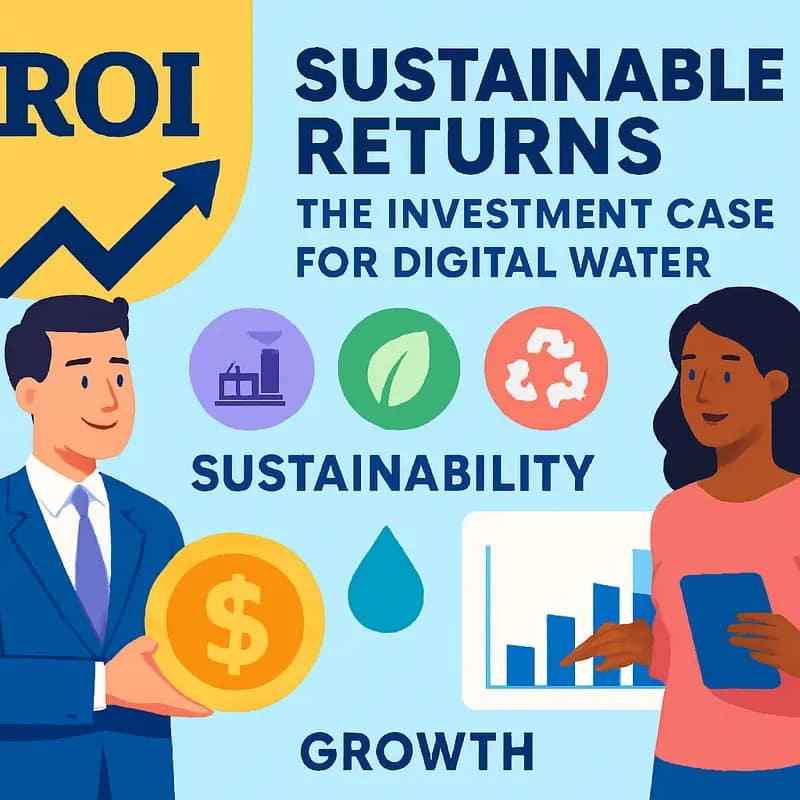
Digital transformation of water infrastructure represents one of the most compelling investment opportunities in the utilities sector. Analysis shows that digital solutions deliver ROI ranging from 5-15x over traditional infrastructure investments, while dramatically improving operational resilience and sustainability outcomes.
A landmark case study from a major US utility demonstrated how implementing digital twin technology for asset management resulted in 23% reduction in maintenance costs and 35% decrease in emergency repairs within 18 months. The utility was able to shift from reactive to predictive maintenance, extending asset lifespans by an average of 7 years while reducing capital expenditure needs.
The investment thesis centers on three key value drivers. First, digital solutions enable utilities to extract significantly more value from existing physical assets through improved efficiency and reduced losses. One mid-sized utility saved over $3.2 million annually by using advanced analytics to optimize pump operations and reduce energy consumption by 18%.
Second, digital technologies create new revenue opportunities through data monetization and premium services. Forward-thinking utilities are leveraging their digital capabilities to offer consulting services to smaller systems, creating win-win partnerships that improve sector-wide resilience while generating returns.
Third, digital transformation dramatically improves environmental performance and regulatory compliance. Real-time monitoring and automated controls help utilities prevent violations, reduce their carbon footprint, and build trust with regulators and communities. This translates into lower operational risk and cost of capital.
The $100 million fund recognizes that digital water represents a foundational shift rather than an incremental improvement. As utilities face mounting pressure to do more with less, digital solutions offer a path to simultaneously enhance service quality, reduce costs, and improve sustainability metrics.
Crucially, digital investments demonstrate strong recession resistance, as they directly impact mission-critical operations. During economic downturns, the efficiency and optimization benefits become even more valuable to utility bottom lines.
While upfront costs can be significant, innovative financing models including performance-based contracts and shared savings agreements are emerging to align incentives and reduce barriers to adoption. This creates opportunities for investors to participate in the digital water transformation while managing risk exposure.
The underlying market fundamentals remain exceptionally strong, with aging infrastructure, climate pressures, and regulatory requirements driving sustained demand for digital solutions. Early movers who establish strong market positions now will be well-positioned to capture value as the sector accelerates its digital journey.
Final words
Bentley Systems stands as a unique force in the water infrastructure investment landscape, distinguished by its focused approach to digital transformation and strategic acquisitions. Their $100 million investment fund, while substantial, represents just one facet of their broader commitment to revolutionizing water utility management through technology. By prioritizing digital twin solutions and smart infrastructure, they’re not just investing in companies – they’re investing in the future of water management itself. Their programmatic acquisition strategy, focusing on early-stage companies developing innovative solutions, has proven effective in building a comprehensive ecosystem of water infrastructure technologies. As water utilities worldwide face increasing challenges from aging infrastructure, climate change, and growing population demands, Bentley’s approach to combining technical expertise with strategic investment could serve as a model for future water sector innovation. The company’s global reach and continued focus on AI integration and smart city initiatives suggests they’re well-positioned to lead the next wave of water infrastructure modernization.
Wanna explore the Full List of Water Investors that cut at least two checks over the past decade? Check it out and bookmark it, I update it regularly!
Learn more: https://dww.show/the-ultimate-water-investor-database/
About us
Through my “(don’t) Waste Water” platform, I offer unique and insightful coverage of the water industry that combines technical expertise with engaging storytelling. If you haven’t yet, it might be time for you to subscribe to the podcast, the youtube channel and/or the newsletter!
